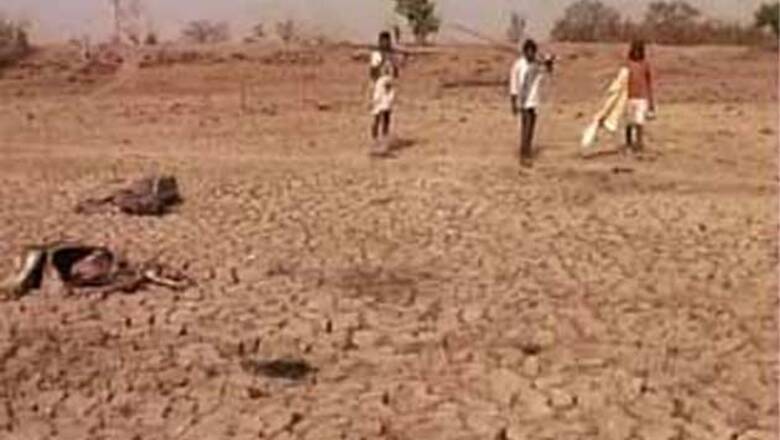
views
New Delhi: Millions of people in Maharashtra are at serious risk of hunger after two years of low rainfall, coupled with poor management of water resources, have left dams empty, farmland parched and cattle emaciated, aid agencies warned on Thursday.
Maharashtra -- one of the country's biggest producers of sugar, pulses, cotton and soybeans -- is reeling from the worst drought in more than four decades after receiving less than 50 per cent of the average rainfall during the last two monsoon seasons.
As a result, millions of people from mainly farming communities across 15 districts are facing severe shortages of drinking water, and are unable to grow crops and provide fodder for their livestock, aid workers say.
"Drinking water is a serious problem as the normal supply systems such as wells and piped water from the dams (reservoirs) have completely collapsed. People are resorting to tankered drinking water, but it is not enough," said KV Thomas, chief zonal officer for Church's Auxiliary for Social Action (CASA), a Church-backed relief organisation.
"I think hunger is likely to become a critical issue in the coming weeks as farmers have no income and their backup resources are now depleting. People will have no way to feed their families soon. Over the last 40 years we have seen many droughts, but nothing like this."
Almost one-fifth of Maharashtra, India's third largest state, has been declared drought-hit, and some 12,000 villages across districts such as Solapur, Ahmednagar, Satara, Beed, Nashik, Latur and Nanded need help.
CATTLE CAMPS, TANKER TRUCKS
In March the government approved spending of 12 billion rupees on relief. It has brought in around 2,500 tanker trucks to supply drinking water and set up "cattle camps" where farmers can bring their livestock for fodder.
But aid workers say the state response has been inadequate, erratic and ineffective, with many villages unable to reach the services being provided.
"It's a very sad situation on the ground. People have no work and are just sitting idle or walking around with water-collecting utensils in these villages which are bone-dry," says Rekha Shetty, director of disaster management for Catholic Relief Services.
Charities say the problem is partly climatic, but also due partly to poor management of water resources, so that dams once used to irrigate farmland are increasingly being diverted to service the state's rapid industrialisation.
As a result, more water from the dams is going to sugar factories and newly built luxury residential areas complete with golf courses, while farmers are losing out on water for crop irrigation and relying more on erratic monsoons, they say.
Aid groups say increasing numbers of people are also now migrating to urban centres in Maharashtra in search of work.
"This is one of the worst droughts and has triggered distress-migration to urban centres," said an alert issued by the Act Alliance, a coalition of 130 civil society organisations.
"Squeezed out of their villages by water scarcity, hundreds of young men from Maharashtra's parched interior are now standing on the city's doorstep in search of employment."




















Comments
0 comment